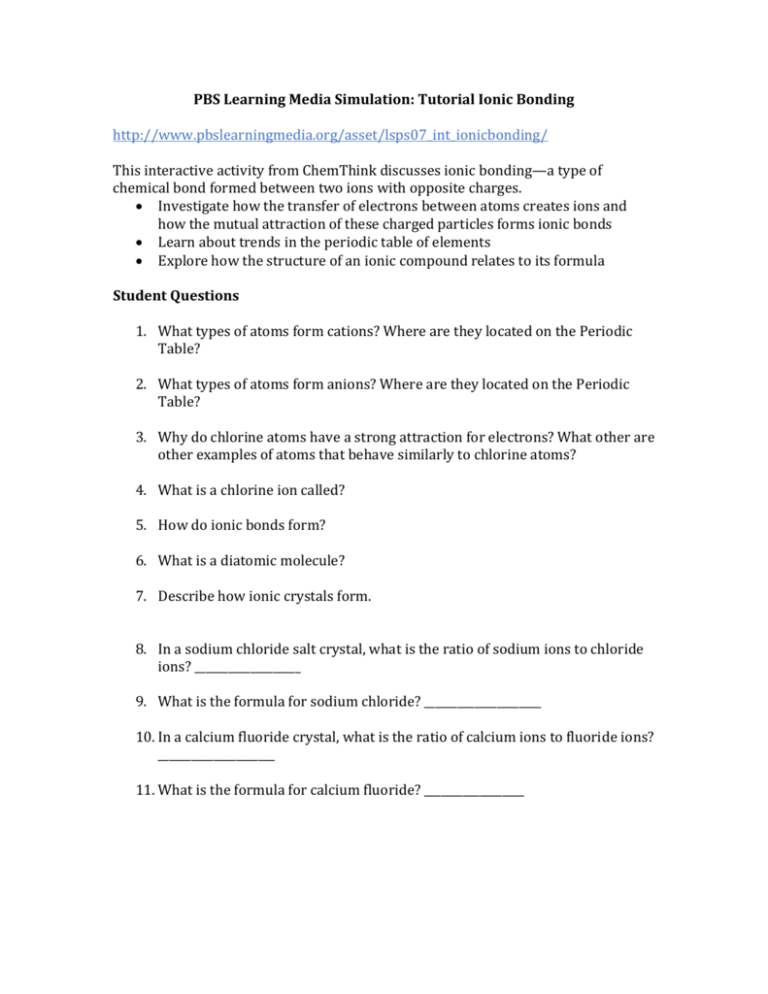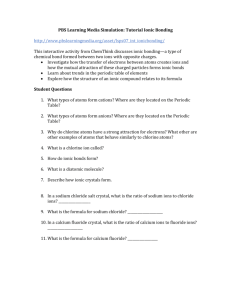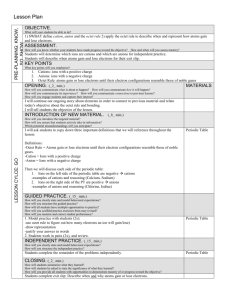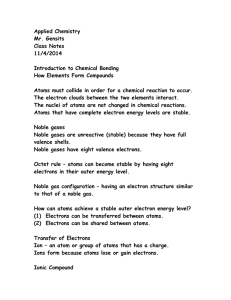PBS Learning Media Simulation: Tutorial Ionic Bonding http://www
advertisement

PBS Learning Media Simulation: Tutorial Ionic Bonding http://www.pbslearningmedia.org/asset/lsps07_int_ionicbonding/ This interactive activity from ChemThink discusses ionic bonding—a type of chemical bond formed between two ions with opposite charges. Investigate how the transfer of electrons between atoms creates ions and how the mutual attraction of these charged particles forms ionic bonds Learn about trends in the periodic table of elements Explore how the structure of an ionic compound relates to its formula Student Questions 1. What types of atoms form cations? Where are they located on the Periodic Table? 2. What types of atoms form anions? Where are they located on the Periodic Table? 3. Why do chlorine atoms have a strong attraction for electrons? What other are other examples of atoms that behave similarly to chlorine atoms? 4. What is a chlorine ion called? 5. How do ionic bonds form? 6. What is a diatomic molecule? 7. Describe how ionic crystals form. 8. In a sodium chloride salt crystal, what is the ratio of sodium ions to chloride ions? ___________________ 9. What is the formula for sodium chloride? _____________________ 10. In a calcium fluoride crystal, what is the ratio of calcium ions to fluoride ions? _____________________ 11. What is the formula for calcium fluoride? __________________ Answers 1. Atoms with loosely held outer electrons or metals tend to form cations. They are found on the left side of the Periodic Table. 2. Atoms that are very electronegative tend to form anions. They are found on the right side of the Periodic Table. 3. Chlorine atoms are very electronegative. They need one more electron to have a completely filled electron shell and become stable so they tend to steal electrons from other atoms. Other electrons with similar electron configurations in the halogen family behave like chlorine; for example, fluorine and bromine. 4. A chlorine ion is called chloride. 5. Ionic bonds form when oppositely charged cations and anions are attracted to each other. An ionic bond is an electrostatic force of attraction between to ions. 6. A diatomic molecule is a molecule composed of two atoms. Atoms like chlorine, hydrogen, oxygen, nitrogen, fluorine, iodine and bromine are found in nature as diatomic molecules or pairs of elements rather than individual atoms. 7. Ionic crystals form as negative ions and positive ions electrostatically attracted to each other come together, forming a structure of alternating cations and anions. 8. 1:1 9. NaCl 10. 1:2 11. CaF2









